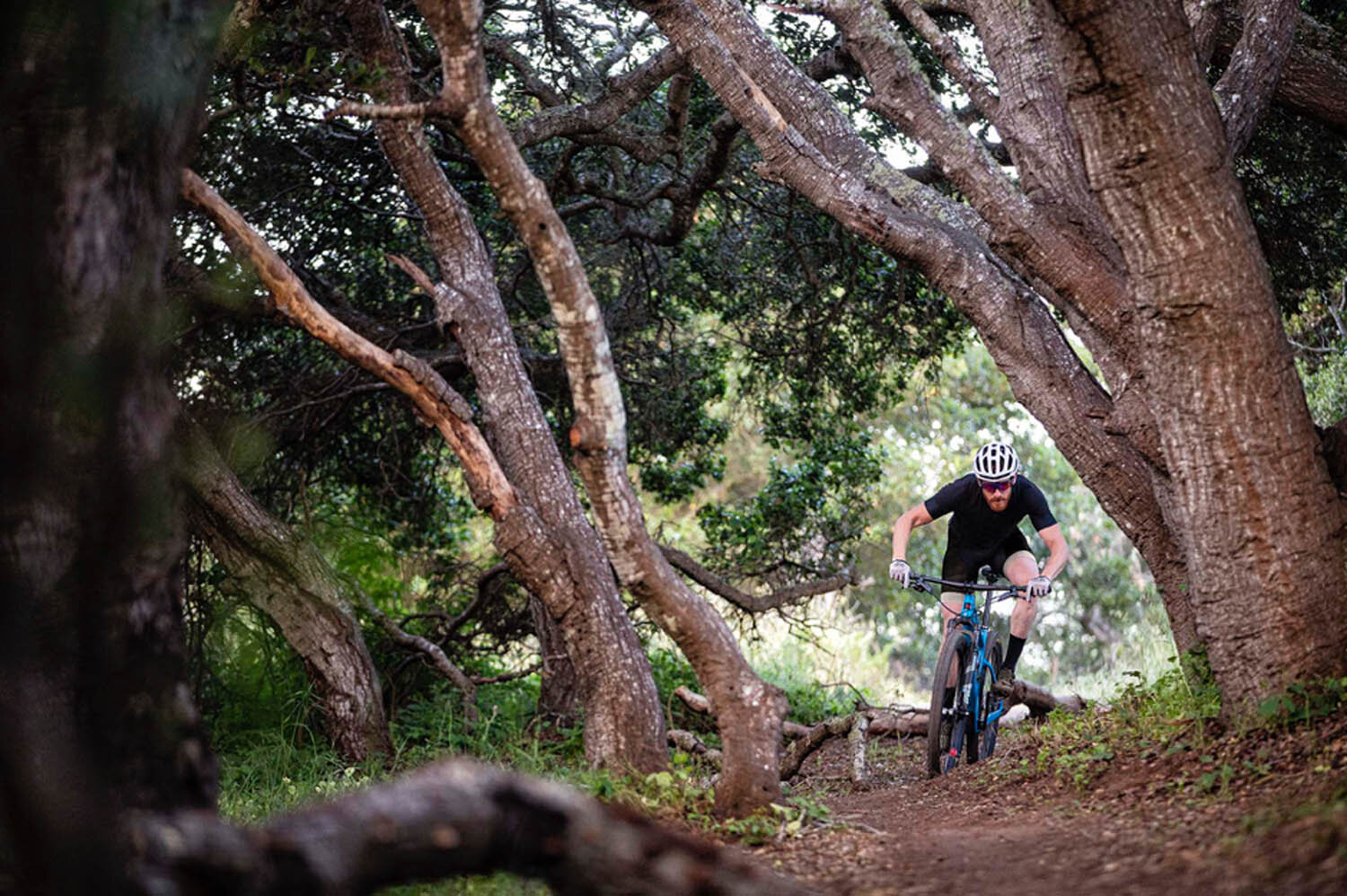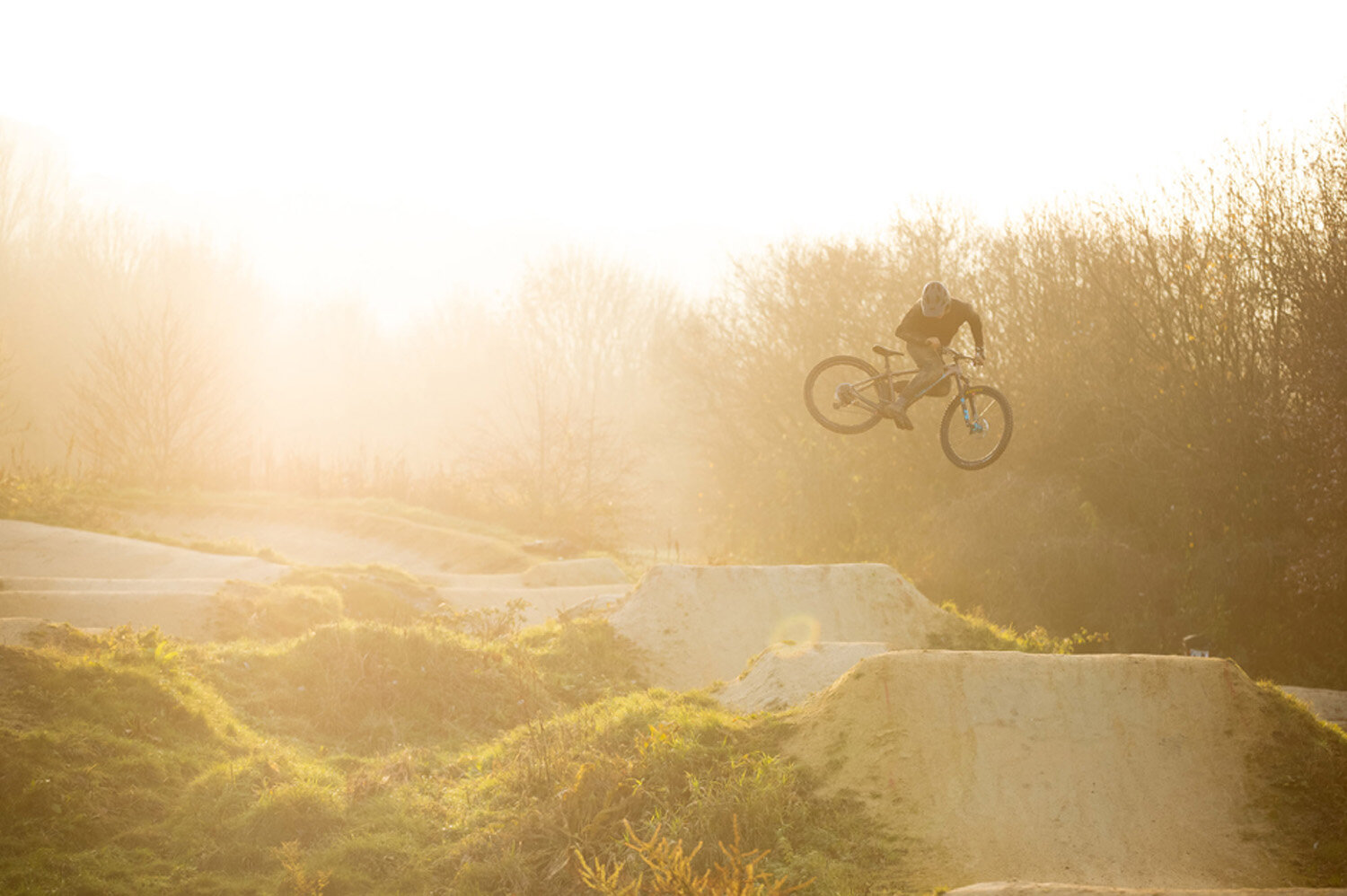With summer just around the corner and lockdown restrictions easing, it’s the perfect time for a mountain biking adventure! But with so many options available to us, how do we know which one to choose? Using our easy-to-follow guide below, it’s never been easier to find your perfect bike.
All the different ‘types’ of mountain bikes can be confusing
Making sure you pick the correct mountain bike (MTB) is key to you enjoying your ride and having a hassle-free adventure! When deciding which bike is right for you, ask yourself the following questions:
- Where and how do you plan to ride?
- What key features are you looking for?
- Does the bike fit me correctly?
Types of MTBs
Once you have figured out what you want from your bike, you can start looking into your options.
Firstly, you should start by looking at what type of mountain bike will fit the bill. Below we have summarised your options to help you decide.
Trail Bikes
The all-rounder trail bike
Trail bikes are typically what most people think of when it comes to mountain bikes and they are arguably the most common, as they aren’t designed for one specific specification, they suit multiple purposes.
If you are looking to meet up with friends on your local trails and enjoy a mixture of uphill routes, descents and the occasional jump, then a trail bike is the one for you. Designed to be capable on all types of terrain, trail bikes place an emphasis on fun as well as efficiency and practicality.
A good example of a trail bike would be the Santa Cruz Tallboy.
Cross Country (XC) Bikes
The cross country speed weapon
These bikes are built for riders who prioritize pedalling performance and love a good uphill climb.
These lung-busting machines are bred for efficiency and endurance, with an emphasis on being light in weight. They are great if you’re looking to get competitive, or for riders that enjoy a longer uphill ride.
They could be in hardtail or full suspension formats, with hardtails being the lightest of all XC bikes.
Good examples of hardtails would be the Santa Cruz Highball or the LIOS Hellfire, which we will be launching in the summer. The Santa Cruz Blur is a great XC suspension bike.
Fat Bikes
The beast! Fun on loose terrain
The clue really is in the name for these bikes. Featuring oversized tyres, Fat Bikes provide a large amount of traction, meaning they are great riding in the snow and sand.
They are also good for beginners getting into mountain biking as the wide tyres are highly versatile and can help keep new riders stable on rougher terrains.
All-Mountain or Enduro Bikes
Probably the most popular ‘style’ of MTB currently
This category of bikes is highly related to trail bikes, but think of them as a more advanced version.
They are the centrepiece of ‘Enduro’ races, where leg-burning sprints are essential as well as gnarly descents. These bikes can tackle long descents, difficult terrain and airtime, as well as being light and nimble enough to pedal uphill. They also make appearances at bike parks.
Santa Cruz offer a number of enduro bikes, like the Nomad 27.5” or the Hightower 29”. At LIOS, we will be launching the Thunderbolt 29” in the summer.
Downhill MTBs
The downhill ‘Big Rig’ for the hardcore racer and enthusiast
Yes, you guessed it downhill bikes are designed to go only one way…down! They are perfect for steep, uneven terrain, as well as big drops and crazy jumps.
These large, tough bikes are better for the more experienced riders who aren’t remotely interested in uphill rides, but instead love to tear downhill at high speeds, adding some airtime in along the way.
The Santa Cruz V10 is the ultimate downhill slayer!
Mountain Bike Features
Suspension
Suspension is a really important feature for any MTB, as this can help determine what terrain the bike is capable of handling. Check out our brief overview of the three types of suspension below to see which one suits you best.
Rigid
Not the most common bike, rigid MTBs don’t come with any suspension at all. They are great for riding on the pavement, as well as being easier to maintain and are normally less expensive. However, most mountain bikers will opt for a bike with suspension for greater comfort on trails and tough terrain. Having said that, most fat bikes have no suspension, but many find the wider tires and low pressure enough to absorb all the bumps on a trail.
Hardtail
These mountain bikes have a suspension fork at the front to absorb impact on the front wheel, but no suspension at the rear (hence the name ‘Hardtail’). Cross country riders tend to go for hardtail bikes, as it allows more transfer of power between the pedal stroke and the rear tyre. With less moving parts, these bikes tend to be cheaper than full suspension bikes and are easier to maintain, making them a great option for many riders.
Full suspension
These bikes come with suspension on both the front and the rear to absorb shock from all impacts of a trail and drastically improve comfort and grip for the rider, creating a more enjoyable ride. This can, however, cause the bike to ‘bounce’ slightly, which means you lose some energy transfer uphill. So nowadays most full suspension bikes now come with the ability to lock out the rear suspension to offer a more efficient climb.
Wheel size
26”
Traditionally most mountain bikes were fitted with 26” wheels. The option is still available to have this size wheel, however, they aren’t as common and are better reserved for dirt jump/freeride and kids’ bikes.
Most Dirt Jump (DJ) bikes use 26” wheels
27.5” (650b)
These wheels offer you the best of both worlds, as a mid-ground between the traditional 26” and 29ers. They can roll easier over terrain than 26”, but are more manoeuvrable than 29ers. 27.5” wheels can also be found on both hardtail and full suspension bikes, although they are getting less common.
29” (29er)
These sized wheels can be a bit slower to accelerate, but once you get going, they are a lot easier to cover terrain and tend to deal with roots/rocks easier than smaller wheeled bikes. They are great for longer riders as you can keep your momentum up and can roll over any obstacles you may encounter on trails with ease. 29ers have become extremely popular across all mountain biking disciplines.
Frame
The most common materials for mountain bike frames are aluminium and carbon.
Aluminium frames are tough and can withstand harder impacts than carbon without cracking, as well as being cheaper to buy. However, they are heavier and can lead to less comfortable rides.
Carbon frames are light weight and therefore more responsive. They can also provide a better ride quality, as they have a less rigid frame. However, this means they aren’t as durable as aluminium. That said, carbon designed frames have come a long way and many brands (like LIOS and Santa Cruz) now offer lifetime warranties on their frames.
Gears
When considering gears, you need to think about your fitness levels and the terrain you’re going to be riding on. If you’re going to be tackling lots of uphill climbs, you might want to ensure you have low ratios. Nowadays most brands have gone for a 1x (pronounced “one by”) setup, which is where there is only one chainring at the front and then a large ratio cassette at the back. You have less overall gears, but the ratio between lowest and highest is still offered, but with the benefit of saving weight.
Mountain Bike Fit
Although you don’t especially need a professional bike fit (like with a road or tri bike), you should ensure that you get the right sized MTB for you, so it always pays divendends to talk to someone about sizing before purchasing.
Even better would be to get sized up, which is something we of course offer at LIOS. More info on our bike fitting page.
Finding the right MTB for you can be tricky, but by doing your research and using our guide above, it should hopefully make it a little easier, so you will be out on the trails in no time.








